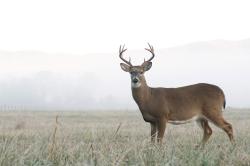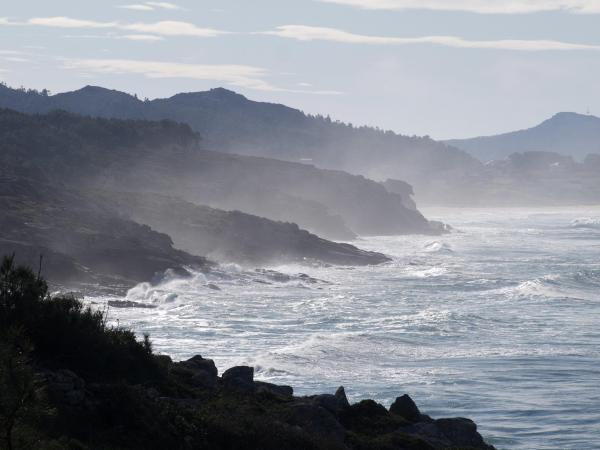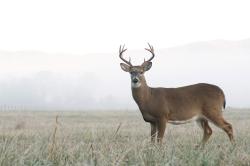What Is the Difference Between Mist, Fog and Mist?


Have you ever looked out your window on a foggy morning and marveled at the ethereal beauty of the scene? Or perhaps you've driven through a haze-filled landscape, its otherworldly quality both mesmerizing and disorienting. Fog, mist, and haze are all atmospheric phenomena that can reduce visibility, but they are also captivating displays of nature's artistry. Each has its own unique characteristics and formation processes, yet they are all interconnected in a complex dance of clouds and light.
In this article by thedailyECO, we will explore the differences between fog, mist, and haze, and delve into the science behind their formation and their types.
What is fog?
In simple terms, fog is a collection of tiny water droplets or ice crystals suspended in the lower layers of the Earth's atmosphere. These minuscule particles scatter light, resulting in the air appearing hazy or unclear. The outcome is reduced visibility that can turn familiar landscapes into enigmatic, otherworldly scenes.
How does fog form?
To demystify fog's formation, consider it a delicate interplay between three key elements: moisture, temperature, and air movement.
- Moisture: fog requires a sufficient amount of moisture in the air, often originating from sources like nearby bodies of water, damp soil, or moist vegetation.
- Temperature: fog typically emerges when the air cools to a point where it can no longer hold all its moisture as vapor. This cooling often takes place at night as the Earth loses heat, causing the air to cool and dew point temperatures to converge.
- Air movement: fog formation is influenced by wind conditions. Gentle or still winds encourage water droplets to linger in the air, resulting in denser fog.
Types of fog
Fog isn't a uniform phenomenon; it comes in various forms, each with its unique attributes:
- Advection fog: forms when warm, humid air meets a cold surface, like a cold water current or land. This contact causes condensation, resulting in persistent fog.
- Steam fog: occurs when cold air passes over a warmer water surface, leading to water evaporation and fog formation, often seen on cool mornings over water bodies.
- Mixing fog: emerges when different air masses with varying temperatures and humidity mix, creating fog. Common in mountainous areas.
- Freezing fog: forms in sub-freezing temperatures, with liquid water droplets turning to ice on contact with surfaces.
- Ice fog: similar to freezing fog but at even lower temperatures, resulting in very small ice crystals suspended in the air. Common in polar regions.
- Hail fog: occurs briefly after a hailstorm, usually close to the ground and thin.
Learn more about fog and their different types in this other article.

What is mist?
In essence, mist is a congregation of tiny water droplets suspended in the air. These minuscule droplets are so fine that they almost seem to hover, creating a soft, hazy atmosphere.
Unlike its denser sibling, fog, mist maintains a delicate and somewhat translucent appearance.
How does mist form?
Just like with fog, moisture, temperature, and air movement play a pivotal role in forming mist. Let us take a closer look at how these factors contribute to the formation of mist:
- Moisture: mist requires moisture as its primary ingredient, often sourced from nearby water bodies, humid environments, or the aftermath of rainfall.
- Temperature: mist typically appears when the air is slightly cooler than its surroundings. This cooling often occurs during the early morning or evening, as the Earth's surface temperature decreases.
- Air movement: subtle air currents, like gentle breezes or calm conditions, encourage mist to form and linger. These delicate flows help keep the fine water droplets suspended in the air.
Types of mist
Mist doesn't come in a single form; it can manifest in various ways, each with its unique characteristics:
- Ground mist: this type of mist rests close to the Earth's surface, often blanketing fields, valleys, or low-lying areas. It's a common sight on cool mornings.
- Sea mist: as the name implies, sea mist appears near coastal regions. It emerges when warm, moist ocean air meets cooler land, resulting in mist over the water.
- Upslope mist: similar to upslope fog, this mist forms in hilly or mountainous terrain. Moist air ascends slopes, cools, and transforms into mist.
You might be interested in this other article, where we explain the difference between a waterspout and a tornado.

What is haze?
Haze is essentially an ensemble of minuscule particles suspended in the air, lending a milky or somewhat translucent appearance. These particles scatter and absorb light, often making distant objects less defined and giving the world a dreamlike quality.
Haze is caused by a combination of factors, including moisture, specific weather conditions, and tiny particles. Unlike fog and mist, which are primarily composed of water droplets, haze can also contain other types of particles, such as dust, smoke, and pollutants. Let us take a closer look:
- Tiny particles: haze forms when the air holds tiny particles, which can include natural sources like dust, salt, pollen, or even pollutants. These particles are the building blocks of haze. This difference in composition is why haze can appear more diffuse and less dense than fog and mist.
- Moisture: while haze isn't as moisture-rich as fog, it can contain a moderate amount of moisture, often sourced from nearby water bodies or humid settings.
- Weather conditions: the presence of high-pressure systems, stable air masses, and gentle winds frequently encourages the development and persistence of haze.
Types of Haze
Like fog and mist, haze is not a single entity, but rather a variety of atmospheric phenomena with different forms and compositions, mainly two:
- Dry Haze: this kind of haze primarily consists of dry particles like dust, ash, or pollen. It can cast a hazy curtain, reducing visibility and adding an otherworldly touch.
- Wet Haze: wet haze carries a higher moisture content, often appearing as a mix of tiny water droplets and particles. It can result from the interplay of moisture with pollutants.
Discover further insights into this phenomenon in another article, where we delve into the intricacies of haze weather.

The key distinctions among fog, mist, and haze
In summary, the key distinctions among fog, mist, and haze lie in their density, composition, and impact on visibility.
Fog
- Is the densest of the three and is primarily composed of tiny water droplets.
- It's known for significantly reducing visibility, often making it challenging to see beyond just a few feet.
- Fog typically forms during the night or early morning when the ground cools down, causing the air near the surface to reach its dew point.
- This process results in the condensation of water vapor into countless tiny droplets that collectively create a thick, opaque layer. Foggy conditions can persist until the sun's warmth disperses it.
Mist
- Mist, while also consisting of tiny water droplets, is less dense compared to fog.
- It allows for better visibility, as you can generally see more than just a few feet in front of you.
- Mist can form at any time of the day, but is most commonly observed during the early morning hours.
- It often arises when moist air interacts with slightly cooler temperatures, leading to the condensation of water vapor into fine droplets that create a delicate, hazy ambiance.
Haze
- Haze, on the other hand, is the least dense of the trio.
- It is characterized by a mixture of tiny water droplets, dust, smoke, and various pollutants suspended in the air.
- While haze can reduce visibility, it doesn't reach the thickness of fog or even mist.
- Haze can occur at any time of the day but is particularly prevalent in urban areas where higher levels of air pollution are present.
- The presence of pollutants and particles in the atmosphere scatters and absorbs light, causing distant objects to appear less distinct and giving the surroundings a hazy or milky appearance.
Understanding these distinctions is not only fascinating from a meteorological perspective but also essential for safety and awareness, especially when navigating environments with reduced visibility due to these atmospheric phenomena.
If you want to read similar articles to What Is the Difference Between Mist, Fog and Mist?, we recommend you visit our Meteorological phenomena category.








